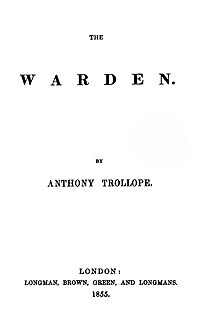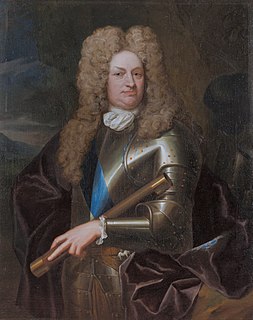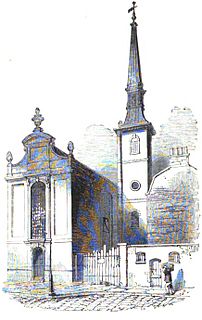Body
In March 1838, workmen were carrying out repairs on the vaults and tombs near the main altar of St Nicholas’ Collegiate Church. They discovered a body, apparently incorrupt. It was determined to be the body of John Bodkin. This caused a sensation in the town, especially among the largely Roman Catholic population. According to a statement by the supervisor, Mr. Clare,
"... members of the old families, the descendants of the Tribes, began to frequent the church. Many of them pointed out to me the vault which, they said, contained the remains of the Very Rev Warden Bodkin... upon opening the vault I was the first to descend. I found the body of a man, all perfect, except for his toes. Many of the by-standers stated that they had been broken off by one of the covering flags that broke and fell into the vault 100 years before this date."
Concerning the body, Mr. Clare said:
"The hands were in all appearance perfect, even to the nails and fingers , not discoloured. The face perfect the ears and top of the nose, all the teeth were perfectly white, all the skin (not) discoloured. By my pressing my hand on any part of this body, it felt quite elastic."
Deception
Clare was woken by John McMahon, foreman carpenter, with the news that that body had been desecrated and the right arm missing. McMahon, a Presbyterian, feared that as the local Catholics "held this relic sacred [they] would be likely to accuse him of the deed." Sexton Caddy was summoned and closely questioned by the workmen about the body. He denied he did anything. The men threatened to throw him off the nearby bridge into the River Corrib. He was being actually dragged to the bridge before he confessed that he had given the key that night to a Mr. Timothy Murray. Mr. Clare went to Murray’s office, and had it confirmed that he did indeed have the key, but would only give it to his parish priest, Rev. Dr. Roch, who was duly sent for.
While Clare was seeking the key, crowds of people began to rush the church in the hope of witnessing a miracle. Fr. Roch arrived and was so concerned at the large number present that he told them to return at two p.m. when he would replace the hand. At two p.m., thousands of people were crammed into the church and the surrounding streets, but Fr. Roch did not arrive until four p.m. He produced the hand, its fingers cut off from the palm.
Mr. Clare’s statement finished by stating that:
"“During the day the carpenter got a coffin made into which I put the body. At lifting the body, I found that the skin had been cut off the breast. The amputated hand I put into the coffin with the body. Many persons there stated it was the fourth time that a coffin had been worn out by the remains. I then closed the coffin and vault in such a way that there can be no access to it except by ripping up the floor."
A suggestion made to Mr. Clare was that perhaps it would be better if Bodkin’s remains were buried elsewhere. He put this question to the Vicar General, Rev. Laurence O’Donnell, who replied: "Do not remove it. I think it is a kind of a possession, whereas part of his prayer has been granted. It is likely the reminder of it be accomplished in its own time."

Galway is a city in County Galway in the West of Ireland, in the province of Connacht. It lies on the River Corrib between Lough Corrib and Galway Bay, and is the sixth most populous city in Ireland, with a population at the 2016 Census of 79,934.

Barchester Towers, published in 1857 by Anthony Trollope, is the second novel in his series known as the "Chronicles of Barsetshire". Among other things it satirises the antipathy in the Church of England between High Church and Evangelical adherents. Trollope began writing this book in 1855. He wrote constantly and made himself a writing-desk so he could continue writing while travelling by train. "Pray know that when a man begins writing a book he never gives over", he wrote in a letter during this period. "The evil with which he is beset is as inveterate as drinking – as exciting as gambling".

The Collegiate Church of St. Nicholas is a medieval church building in Galway, Ireland. It is a collegiate church and the parish church of St. Nicholas Church of Ireland parish, which covers Galway city. It was founded in 1320 and dedicated to Saint Nicholas of Myra, the patron saint of seafarers, in recognition of Galway's status as a port. The monumental work of Irish genealogy, the Leabhar na nGenealach was produced here in 1650 by Duḃaltaċ MacḞirḃisiġ.

The Tribes of Galway were 14 merchant families who dominated the political, commercial and social life of the city of Galway in western Ireland between the mid-13th and late 19th centuries. They were the families of Athy, Blake, Bodkin, Browne, D'Arcy, Deane, Font, Ffrench, Joyce, Kirwan, Lynch, Martin, Morris and Skerritt. Of the 14 families, 12 were of Anglo Norman origin, while two — the D'Arcy and Kirwan families — were Normanised Irish Gaels.

Manchester Cathedral, formally the Cathedral and Collegiate Church of St Mary, St Denys and St George, in Manchester, England, is the mother church of the Anglican Diocese of Manchester, seat of the Bishop of Manchester and the city's parish church. It is on Victoria Street in Manchester city centre.

In Christianity, a collegiate church is a church where the daily office of worship is maintained by a college of canons: a non-monastic or "secular" community of clergy, organised as a self-governing corporate body, which may be presided over by a dean or provost. In its governance and religious observance a collegiate church is similar to a cathedral, although a collegiate church is not the seat of a bishop and has no diocesan responsibilities. Collegiate churches were often supported by extensive lands held by the church, or by tithe income from appropriated benefices. They commonly provide distinct spaces for congregational worship and for the choir offices of their clerical community.

Thomas Percy, 7th Earl of Northumberland, 1st Baron Percy, KG, led the Rising of the North and was executed for treason. He was later beatified by the Catholic Church.

The Warden, published in 1855, is the first book in Anthony Trollope's Chronicles of Barsetshire series of six novels. It was his fourth novel.

Godard van Reede, 1st Earl of Athlone, Baron van Reede, Lord of Ginkel, born in the Netherlands as Baron Godard van Reede was a Dutch general in the service of England.

The Roman Catholic Diocese of Galway, Kilmacduagh and Kilfenora is a Roman Catholic diocese in the west of Ireland. It is in the ecclesiastical province of Tuam and is subject to the Metropolitan Archdiocese of Tuam. The deanery of Kilfenora, previously a diocese in its own right, lies in the ecclesiastical province of Cashel. The Ordinary is Bishop Brendan Kelly who was appointed on 11 December 2017.

Ugthorpe is a village and civil parish in the Scarborough borough, situated near Whitby, North Yorkshire, England. According to the 2011 UK census, Ugthorpe parish had a population of 225, an increase on the 2001 UK census figure of 201.
Events from the year 1831 in Ireland.
Matthias McDonnell Bodkin was an Irish nationalist politician and MP. in the House of Commons of the United Kingdom of Great Britain and Ireland and Anti-Parnellite representative for North Roscommon, 1892–95, a noted author, journalist and newspaper editor, barrister, and County Court Judge for County Clare, 1907–24.

The church of St Mildred, Bread Street, stood on the east side of Bread Street in the Bread Street Ward of the City of London. It was dedicated to the 7th century Saint Mildred the Virgin, daughter of Merewald, sub-king of the West Mercians. Of medieval origin, the church was rebuilt to the designs of Sir Christopher Wren following its destruction in the Great Fire of London in 1666. One of the few City churches to retain Wren's original fittings into the 20th century, St Mildred's was destroyed by bombs in 1941.

St Mary's Collegiate Church, Youghal, County Cork, Ireland is a Church of Ireland Church in Youghal, east County Cork and part of the Diocese of Cloyne, which is a constituent diocese of the United Dioceses of Cork, Cloyne and Ross.
Florence Wyndham (1538-1596), wife of Sir John Wyndham of Orchard Wyndham in Somerset, was a daughter of John Wadham of Merryfield, Ilton in Somerset and Edge, Branscombe in Devon and was a sister and co-heiress of Nicholas Wadham, co-founder of Wadham College, Oxford.

Samuel Peploe was Bishop of Chester from 1726 to 1752.

Randalstown is a townland and small town in County Antrim, Northern Ireland, between Antrim and Toome. It has a very prominent disused railway viaduct and lies beside Lough Neagh and the Shane's Castle estate. The town is bypassed by the M22 motorway with junctions at both the eastern and western ends of the town. It had a population of 5,126 people in the 2011 Census.
Edmund Ffrench, O.P. (1775–1852) was the Roman Catholic Warden of Galway and Bishop of Kilmacduagh and Kilfenora.

The Collegiate and Parochial Church of St Peter is the Anglican parish church of Ruthin, an ancient market town which lies within the Vale of Clwyd in Denbighshire, north east Wales. It is a greater church of the diocese of St Asaph and a Grade I listed building.















